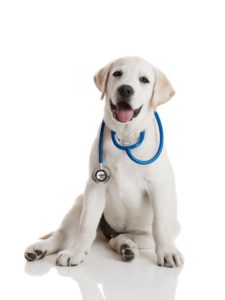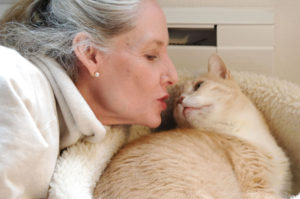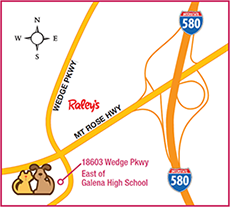
Lumps & Bumps on Pets – Not Necessarily Scary
 Sometimes the simple act of petting or brushing your pet can lead to discovery of a lump that “wasn’t there before”. Rather than jump to conclusions, know the types of lumps and bumps that are quite common.
Sometimes the simple act of petting or brushing your pet can lead to discovery of a lump that “wasn’t there before”. Rather than jump to conclusions, know the types of lumps and bumps that are quite common.
Lipoma
Usually present just under the skin, and generally benign, lipomas vary in firmness.
They can be soft and moveable or hard when entrapped in muscle fibers or sheath.
Sebaceous Cyst
This is a superficial bump typically due to plugged oil glands in the skin.
Sebaceous Cysts can become irritated or infected, and can develop into tumors, requiring removal and examination by a veterinary pathologist.
Cancerous Lump
Benign lumps tend not to spread, but can grow to an uncomfortable size.
Cells from malignant lumps can spread rapidly and can metastasize to other areas of the body.
It is these lumps that need immediate attention for both mass removal and post-surgical treatment.
Knowledge is Power – Check it Out!
 Ignoring lumps and bumps only causes stress and fear of the diagnosis.
Ignoring lumps and bumps only causes stress and fear of the diagnosis.
Be Proactive!
There are several ways for a veterinarian to thoroughly examine lumps and bumps.
While not definitive, Smears collected during a vet office visit can be easily viewed on microscopic slides and are a good first step in diagnosis
Impression Smear is done by pressing the skin mass surface, collecting cells on a microscopic slide.
Aspiration Smear involves inserting a needle into a lump and “vacuuming” cells to be smeared on a microscopic slide.
Incisional Biopsy is removing a small sample of the lump while under sedation. The sample is then sent to a veterinary pathologist for examination.
X-Ray’s and Ultrasounds are usually reserved for detection of internal masses and metastasis to vital organs.
Treatment options are much like those for humans.
Surgery is an important tool for removal of the mass and surrounding tissue and extensive analysis by a veterinary pathologist, followed by continual monitoring for recurrence.
Chemotherapy/Radiation are post-surgery adjunctive treatments, particularly effective on fast-growing tumors.
10 Symptoms That are Worth Noting:
- Lumps and Bumps
- Abnormal Odors
 Abnormal Discharges
Abnormal Discharges- Change in Appetite
- Coughing or Difficulty Breathing
- Changes in Urination or Defecation
- Lethargy or Depression
- Evidence of Pain
- Non-Healing Wounds
- Sudden Weight Loss
Knowing is better than not knowing.
Lumps and Bumps should be quickly examined and treated for wellness and peace of mind.
That goes for both people and pets!





